You are using an out of date browser. It may not display this or other websites correctly.
You should upgrade or use an alternative browser.
You should upgrade or use an alternative browser.
Proportion and look of THE 1919 Tolkowsky Ideal diamond
- Thread starter teobdl
- Start date
- Joined
- Aug 4, 2008
- Messages
- 15,735
Dreamer_D
Super_Ideal_Rock
- Joined
- Dec 16, 2007
- Messages
- 29,144
My old cut diamond complies very closely with the original Tolk proportions.
There is also a really cool section in the book American Cut by Al Gilbertson that includes a bunch of examples of diamonds that fell into the Tolk ideal -- the proportions varied a fair bit back then.
http://www.amazon.com/American-Cut-The-First-Years/dp/0873110595
Here is mine, which as I said, matched pretty closely with the proportions Karl posted with the addition of an approximately 60% depth. The table is also a little smaller in the 50% range.
I also posted a picture of my diamond next to Demelza's which is very similarly proportioned and likely also falls into the American Cut, early ideal category. Both diamonds are probably from the 1920s.
As to performance compared to modern MRBs: Less brightness, bolder scintillation, bigger flashed of fire.

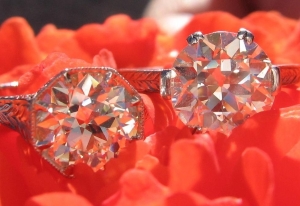
There is also a really cool section in the book American Cut by Al Gilbertson that includes a bunch of examples of diamonds that fell into the Tolk ideal -- the proportions varied a fair bit back then.
http://www.amazon.com/American-Cut-The-First-Years/dp/0873110595
Here is mine, which as I said, matched pretty closely with the proportions Karl posted with the addition of an approximately 60% depth. The table is also a little smaller in the 50% range.
I also posted a picture of my diamond next to Demelza's which is very similarly proportioned and likely also falls into the American Cut, early ideal category. Both diamonds are probably from the 1920s.
As to performance compared to modern MRBs: Less brightness, bolder scintillation, bigger flashed of fire.


Thanks Dreamer and Karl!
And theoretically speaking, are these really the proportions that maximize performance for that LGF percentage (and maybe even any LGF percentage)?
The reason I ask is that it strikes me as a little strange that even with the LGF's so short in the Tolk ideal, the other proportions have stayed so constant for the MRB.
I'm also trying to make sense of an AVR, which has even shorter LGF's than the Tolk Ideal. To maximize light return for the short LGF's, Rhina went steeper on the pav and crown.
By comparison If you lengthen the LGF's from a Tolk to MRB, I would think that you would have to change something to keep maximal light performance (by which I mean balanced fire, brilliance, and scintillation).
And theoretically speaking, are these really the proportions that maximize performance for that LGF percentage (and maybe even any LGF percentage)?
The reason I ask is that it strikes me as a little strange that even with the LGF's so short in the Tolk ideal, the other proportions have stayed so constant for the MRB.
I'm also trying to make sense of an AVR, which has even shorter LGF's than the Tolk Ideal. To maximize light return for the short LGF's, Rhina went steeper on the pav and crown.
By comparison If you lengthen the LGF's from a Tolk to MRB, I would think that you would have to change something to keep maximal light performance (by which I mean balanced fire, brilliance, and scintillation).
- Joined
- May 1, 2008
- Messages
- 3,563
I love this question and topic.
Image from Al Gilbertson: "American Cut, The First 100 Years." Used with permission.
His calculated "best" was what we consider traditional Tolkowksy measurements: 53T 34.5CA 40.75PA (43.1%PD) with a knife-edge girdle. No LGFs were specified but they were notably shorter in those days. As the gas lantern gave way to electric lighting table sizes got larger and lower halves got longer. And, of course, girdles now provide durability.
But there are transitional cuts being produced which reflect traditional Tolk measurements, and even older charmers. You mentioned a fantastic example in your post, above. They have small tables, sometimes down into the 40%s (hearkening back to Henry Morse's proportions) crown heights in the high teen%s, wide pavilion mains, and CA-PA near Morse and Tolkowsky. When you couple that recipe with modern 3D optical precision you're emulating charm from a different era, but maximizing it in a precise way that was not possible until recent times.
In terms of the "sweet spot," Morse postulated 35.0/41.0 for CA-PA. But since there was no way to measure increments of halfs-or-tenths of a degree his 35.0/41.0 is, for all intents and purposes, a rounded version of Tolk's 34.5/40.75.
I wrote a review of Al's book, and thought this excerpt may be interesting:
<< Readers may be surprised to learn that Tolkowsky did not use the term ideal, nor was he the first to discuss ray-tracing. In fact, when he wrote his book in London, diamonds of the same essential angles had been coming out of Boston and New York for decades. And while his well-known model gave precise theoretical proportions he thought optimal, the tools of his day were not actually capable of measuring in the half or three-quarter degree increments he put forward. Tolkowsky acknowledged that "millions of pounds of well-cut diamonds" in the same narrow (by the standards of the day) range of proportions had already been cut in his family's factory... >>
The story of Henry Morse of Boston, Isaac Herman, Tiffany & Company at the turn of the 1900s is especially compelling. There were a number of unsung pioneers of cut in the early 1900s. It's groovy, fascinating stuff.
Full Review:
https://www.pricescope.com/journal/american_cut_first_100_years_al_gilbertson_gg
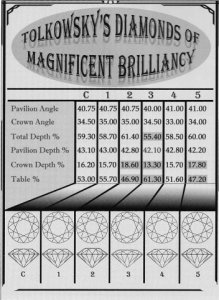
I absolutely recommend this book. Al Gilbertson spent 30 years researching and interviewing sources. It's eye-opening and really tracks the evolution of the modern round brilliant.Dreamer_D|1392928255|3619494 said:There is also a really cool section in the book American Cut by Al Gilbertson that includes a bunch of examples of diamonds that fell into the Tolk ideal -- the proportions varied a fair bit back then.
http://www.amazon.com/American-Cut-The-First-Years/dp/0873110595
Tolkowsky's book actually put forward six proportion sets.teobdl said:I'm wondering what the exact proportions of the 1919 Tolkowsky Ideal cut diamond were, particularly the LGF's, Star% and Table?
Image from Al Gilbertson: "American Cut, The First 100 Years." Used with permission.
His calculated "best" was what we consider traditional Tolkowksy measurements: 53T 34.5CA 40.75PA (43.1%PD) with a knife-edge girdle. No LGFs were specified but they were notably shorter in those days. As the gas lantern gave way to electric lighting table sizes got larger and lower halves got longer. And, of course, girdles now provide durability.
Diamond planning and execution was nowhere as sophisticated or consistent as it is today. A strict lab today would reject many old stones for out-of-round, tilted tables and wide variances in crossworking and brillianteering.teobdl said:More importantly, how would the that ideal look in terms of fire and white light return vs today's AGS 000 MRB?
But there are transitional cuts being produced which reflect traditional Tolk measurements, and even older charmers. You mentioned a fantastic example in your post, above. They have small tables, sometimes down into the 40%s (hearkening back to Henry Morse's proportions) crown heights in the high teen%s, wide pavilion mains, and CA-PA near Morse and Tolkowsky. When you couple that recipe with modern 3D optical precision you're emulating charm from a different era, but maximizing it in a precise way that was not possible until recent times.
In terms of the "sweet spot," Morse postulated 35.0/41.0 for CA-PA. But since there was no way to measure increments of halfs-or-tenths of a degree his 35.0/41.0 is, for all intents and purposes, a rounded version of Tolk's 34.5/40.75.
I wrote a review of Al's book, and thought this excerpt may be interesting:
<< Readers may be surprised to learn that Tolkowsky did not use the term ideal, nor was he the first to discuss ray-tracing. In fact, when he wrote his book in London, diamonds of the same essential angles had been coming out of Boston and New York for decades. And while his well-known model gave precise theoretical proportions he thought optimal, the tools of his day were not actually capable of measuring in the half or three-quarter degree increments he put forward. Tolkowsky acknowledged that "millions of pounds of well-cut diamonds" in the same narrow (by the standards of the day) range of proportions had already been cut in his family's factory... >>
The story of Henry Morse of Boston, Isaac Herman, Tiffany & Company at the turn of the 1900s is especially compelling. There were a number of unsung pioneers of cut in the early 1900s. It's groovy, fascinating stuff.
Full Review:
https://www.pricescope.com/journal/american_cut_first_100_years_al_gilbertson_gg

This topic is amazing!I am so lucky to have found Pricescope. Everyday I am in awe at the breadth of knowledge and thirst for learning (coupled with the wonderful respect and demeanor ) of all of the posters. I am a lay person with a fascination of all things jewelry and I learn everyday when I sign in.
- Joined
- Aug 4, 2008
- Messages
- 15,735
- Joined
- Aug 4, 2008
- Messages
- 15,735
imho combining years of research since 1919.
Tolk discovered a point(points) on a slope of crown/pavilion angles that many well performing diamonds can be found.
Every grading system developed so far(that actually works) ended up forming a slope of crown/pavilion angles.
The reasons for this are beyond the scope of this post and are not fully understood.
The fundamental is the crown pavilion angle with the lgf relationship in a modern diamond* are the driving forces. Where in oec the driving forces were the crown/pavilion angle relationship.
*longer lgf%
Tolk discovered a point(points) on a slope of crown/pavilion angles that many well performing diamonds can be found.
Every grading system developed so far(that actually works) ended up forming a slope of crown/pavilion angles.
The reasons for this are beyond the scope of this post and are not fully understood.
The fundamental is the crown pavilion angle with the lgf relationship in a modern diamond* are the driving forces. Where in oec the driving forces were the crown/pavilion angle relationship.
*longer lgf%
- Joined
- Aug 4, 2008
- Messages
- 15,735
Another reason tolk came up with what he did is they were not dealing with the range of lighting that is common today and getting even more wide ranging with the incandescent light bulb ban.
But what is interesting is long term(20 years) if diamond cut tracks the lighting we may see a trend back towards short lgf% but not as short as oec because of flat lighting. A some what shorter lgf% gives more life in very flat lighting balanced against enough events to have nice performance in other lighting.
Higher steeper crowns can help with that and they have to be balanced with matching pavilions.
In other words short lgf% for flat lighting and or soft side lighting and a high steep crown to get back some life in other lighting conditions balanced with matching pavilion and lgf angles.
But what is interesting is long term(20 years) if diamond cut tracks the lighting we may see a trend back towards short lgf% but not as short as oec because of flat lighting. A some what shorter lgf% gives more life in very flat lighting balanced against enough events to have nice performance in other lighting.
Higher steeper crowns can help with that and they have to be balanced with matching pavilions.
In other words short lgf% for flat lighting and or soft side lighting and a high steep crown to get back some life in other lighting conditions balanced with matching pavilion and lgf angles.
Very interesting about the lighting differences.
Important question: using todays technology to ray trace, etc., would the proportions of the Tolk ideal (40.75, 34.5, etc) actually give the best light return (keeping the LGF constant, only changing PA-CA-table). Or is there another set of proportions that actually gives better light return for that LGF length?
I imagine that LGF length is one of the harder things to cut without super precision tools (given how thin and long those facets are), and this was probably a limiting factor in exploring differences in the lower half other than PA.
Important question: using todays technology to ray trace, etc., would the proportions of the Tolk ideal (40.75, 34.5, etc) actually give the best light return (keeping the LGF constant, only changing PA-CA-table). Or is there another set of proportions that actually gives better light return for that LGF length?
I imagine that LGF length is one of the harder things to cut without super precision tools (given how thin and long those facets are), and this was probably a limiting factor in exploring differences in the lower half other than PA.
- Joined
- Aug 4, 2008
- Messages
- 15,735
Depends on how you define light return and which obstruction model you would use but it would be close to the top but there would be many in the same ballpark and maybe a few higher leaving the lgf% and girdle the same.teobdl|1392955851|3619861 said:Important question: using todays technology to ray trace, etc., would the proportions of the Tolk ideal (40.75, 34.5, etc) actually give the best light return (keeping the LGF constant, only changing PA-CA-table). Or is there another set of proportions that actually gives better light return for that LGF length?
- Joined
- Jan 20, 2009
- Messages
- 1,299
John Pollard|1392935744|3619609 said:...His calculated "best" was what we consider traditional Tolkowksy measurements: 53T 34.5CA 40.75PA (43.1%PD) with a knife-edge girdle. No LGFs were specified but they were notably shorter in those days. As the gas lantern gave way to electric lighting table sizes got larger and lower halves got longer. And, of course, girdles now provide durability.
John raises two important points which I find people rarely take into account when considering the proportions of diamonds which are the early predecessors to the modern renditions of diamond cuts, and that is difference in how we light our homes and offices; and the importance of a girdle edge which is substantial enough to be durable.
I also highly recommend reading Al Gilbertson's book, it was brought to my attention by John's initial review and I ordered it immediately, it provides great insight into the evolution of the modern round brilliant cut diamond, and is one of a few books which found permanent residency on my desk at home.
- Joined
- Jul 21, 2004
- Messages
- 9,159
For those who want to dig into it, Tolkowsky's entire 1919 book has been translated and is available free online. It's not super easy reading but it's not really very long and it's it's straight from the proverbial horses mouth. Many revisions and interpretations have been generated in the last 100 years. For example, he never called his design 'ideal'.
Here's what Mr. Tolkowsky actually said:
http://www.folds.net/diamond_design/index.html
ps. I also recommend Gilbertson's book for those who find this topic interesting. It's a lot easier to read and, although you may have to actually buy it, it's worth the money.
Here's what Mr. Tolkowsky actually said:
http://www.folds.net/diamond_design/index.html
ps. I also recommend Gilbertson's book for those who find this topic interesting. It's a lot easier to read and, although you may have to actually buy it, it's worth the money.
- Joined
- Mar 28, 2001
- Messages
- 6,341
teobdl|1392934071|3619570 said:Thanks Dreamer and Karl!
And theoretically speaking, are these really the proportions that maximize performance for that LGF percentage (and maybe even any LGF percentage)?
The reason I ask is that it strikes me as a little strange that even with the LGF's so short in the Tolk ideal, the other proportions have stayed so constant for the MRB.
I'm also trying to make sense of an AVR, which has even shorter LGF's than the Tolk Ideal. To maximize light return for the short LGF's, Rhina went steeper on the pav and crown.
By comparison If you lengthen the LGF's from a Tolk to MRB, I would think that you would have to change something to keep maximal light performance (by which I mean balanced fire, brilliance, and scintillation).
Since you asked, Teobdl…
For the sake of information, my first experiments, taking modern and classic lighting into account, were picking up where Tolkowsky left off except with the utilization of my own modern knowledge and study of diamond optics acquired over the years, combined with my work with various optical technologies.
I began with 34.5/40.8/53 combined with those lowers and stars. Hey, it was wonderful, and did produce a very fiery OEC but this combination somehow produced a look that reflected too much darkness under the table for me in diffuse lighting.
I took a lesson from the industry, as a whole, where there had been a turn to lengthening the lower half facets to the point where they're at today (75-85%) which is understandable, given normal modern lighting. Through today’s illumination scenarios this does in fact produce a brighter diamond with the 34.5/40.8/53-60 table combo. Technology shows us why and can be explained via ASET. In short, when you have those proportions with short lower half facets, the pavilion mains comprise the primary reflections under the table facet and with those proportions produce the strong blue you see in the Arrows. When you increase the length of the lower halves to the point where they are at today it then becomes those lower half facets that consume the majority of reflections under the table facet as opposed to the mains and make up the "reds" you see in today's ASET's of modern rounds.
So while the industry took a turn to lengthening the lower halves to make a diamond brighter I sought to go a different direction completely.
My goal was obviously different, as I didn't want to make the diamond brighter by lengthening the lower halves, but instead by altering the entire geometry of the OEC facet structure in each facet set and, hence, arriving at completely different proportions from Tolkowsky…quite frankly more of a throwback to his predecessor Henry Morse, being closer to his proportions except tweaked even finer, particularly whenever I go under 50%T, which I am not afraid to do – and am extremely happy in doing.
Hope that helps.
Jonathan
Rhino--definitely helps. Thanks you. I'd suspected that the obstruction in the center was the reason you went steeper with shorter LGF's. Fig 42 of this AGS article showed a similar ASET pattern to your AVR, but with blues under the table rather than the red. To brighten it in the center, you went along the anti-cutters line (Fig 27,2 .
.
http://www.agslab.com/spie/spie_lo_res.pdf
Now that I see it again, it seems like the 1919 Tolk would show a similar pattern to Fig 42, and go dark in the center when obstructed in real life. This would be exacerbated by the point light sources of the time, rather than today's abundant and diffuse light sources. Hard to think that, given the shorter LGF's, people would prefer Tolk's proportions over Morse's.
The book is on my to-read list.
http://www.agslab.com/spie/spie_lo_res.pdf
Now that I see it again, it seems like the 1919 Tolk would show a similar pattern to Fig 42, and go dark in the center when obstructed in real life. This would be exacerbated by the point light sources of the time, rather than today's abundant and diffuse light sources. Hard to think that, given the shorter LGF's, people would prefer Tolk's proportions over Morse's.
The book is on my to-read list.
- Joined
- Mar 28, 2001
- Messages
- 6,341
teobdl|1393104803|3620790 said:Rhino--definitely helps. Thanks you. I'd suspected that the obstruction in the center was the reason you went steeper with shorter LGF's. Fig 42 of this AGS article showed a similar ASET pattern to your AVR, but with blues under the table rather than the red. To brighten it in the center, you went along the anti-cutters line (Fig 27,2.
http://www.agslab.com/spie/spie_lo_res.pdf
Now that I see it again, it seems like the 1919 Tolk would show a similar pattern to Fig 42, and go dark in the center when obstructed in real life. This would be exacerbated by the point light sources of the time, rather than today's abundant and diffuse light sources. Hard to think that, given the shorter LGF's, people would prefer Tolk's proportions over Morse's.
The book is on my to-read list.
Thanks teobdl,
My thoughts exactly and were I living in those days I'd want the More over the Tolkowsky with the shorter lgf's.
One caveat with blues under the table too which I've learned. They can or can't always be translated as obstruction. Ie. It depends on 2 factors.
1. if the crown pavilion combination is right on the cusp of the blue/red zone and
2. The individual's focal length.
PS: I see they put an Octavia in that AGS article too! What's funny is they refer to it as a "high performing emerald cut".
- Joined
- Aug 4, 2008
- Messages
- 15,735
That is why I said it depends on which obstruction model you use.teobdl|1393104803|3620790 said:Rhino--definitely helps. Thanks you. I'd suspected that the obstruction in the center was the reason you went steeper with shorter LGF's. Fig 42 of this AGS article showed a similar ASET pattern to your AVR, but with blues under the table rather than the red. To brighten it in the center, you went along the anti-cutters line (Fig 27,2.
http://www.agslab.com/spie/spie_lo_res.pdf
Now that I see it again, it seems like the 1919 Tolk would show a similar pattern to Fig 42, and go dark in the center when obstructed in real life. This would be exacerbated by the point light sources of the time, rather than today's abundant and diffuse light sources. Hard to think that, given the shorter LGF's, people would prefer Tolk's proportions over Morse's.
The book is on my to-read list.
But in those days the face would have been the brightest light source the diamond can find to return light from in many cases.
Every night when I am at my computer for a diamond I have with/on me that is the case also.
- Joined
- Aug 4, 2008
- Messages
- 15,735
lol.. at least they didn't give the angles away later in the article using one from their charts instead with a larger table.Rhino|1393107513|3620809 said:PS: I see they put an Octavia in that AGS article too! What's funny is they refer to it as a "high performing emerald cut".
It is also clear the scanner did not get a very good scan of the Octavia.
- Joined
- Mar 28, 2001
- Messages
- 6,341
Karl_K|1393112494|3620836 said:lol.. at least they didn't give the angles away later in the article using one from their charts instead with a larger table.Rhino|1393107513|3620809 said:PS: I see they put an Octavia in that AGS article too! What's funny is they refer to it as a "high performing emerald cut".
It is also clear the scanner did not get a very good scan of the Octavia.
Gah YEP
Share:
The Ultimate Guide to Men’s Wedding Bands: Metals, Fit & Finish
The Ultimate Guide to Men’s Wedding Bands: Metals, Fit & Finish - 06/27
Chipped Diamonds: Causes, Risks, and What You Should Do About It
Chipped Diamonds: Causes, Risks, and What You Should Do About It - 06/27

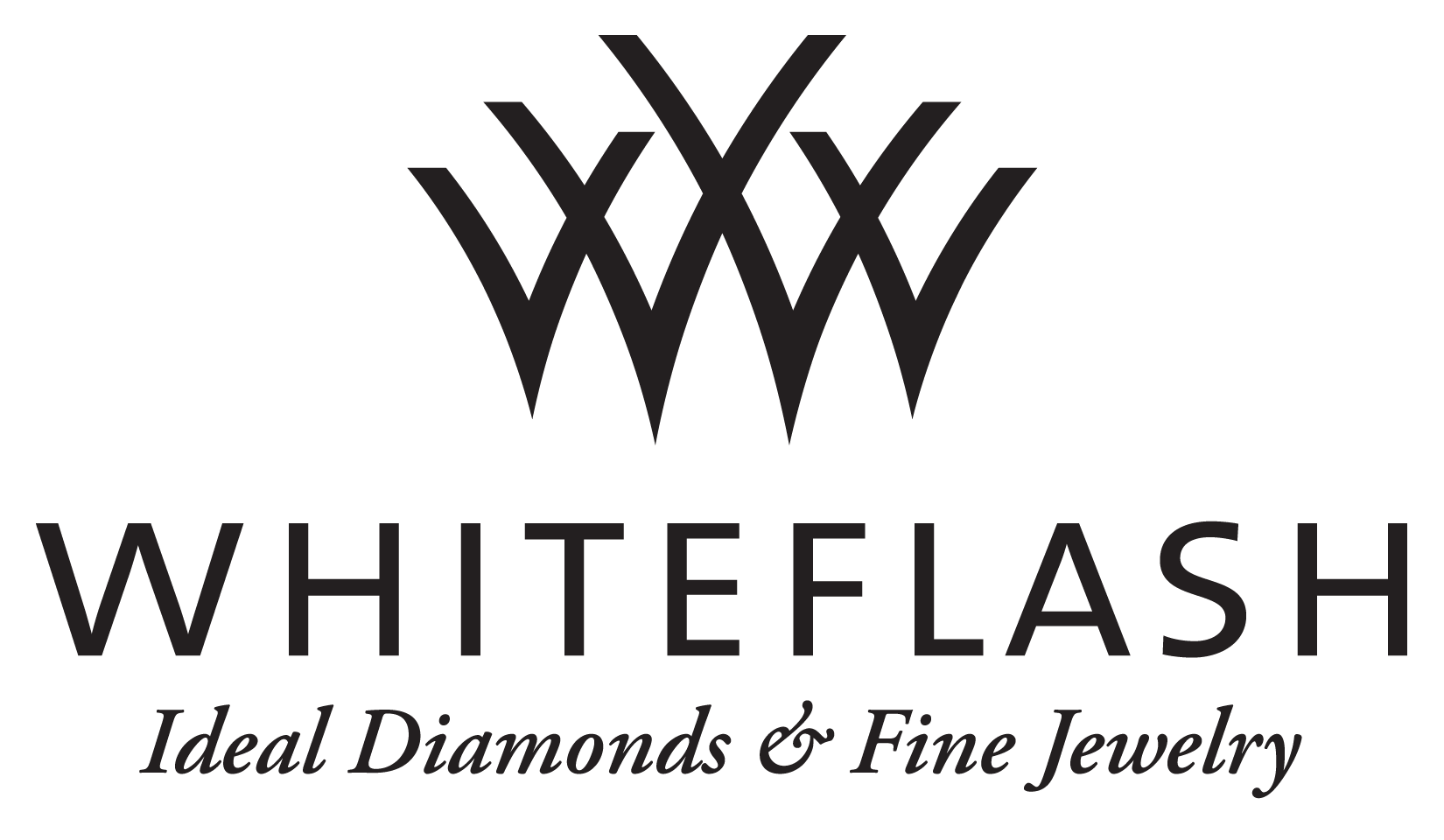
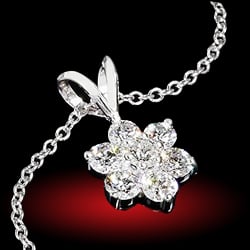
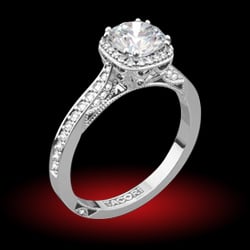
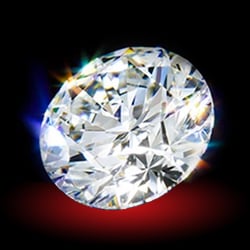


300x240.png)